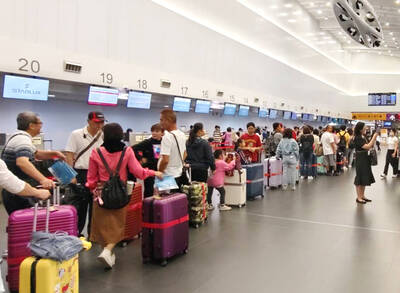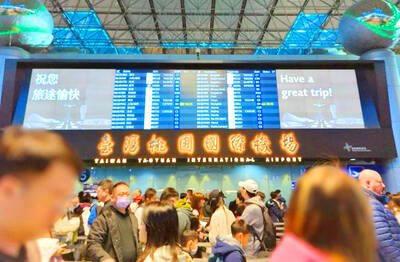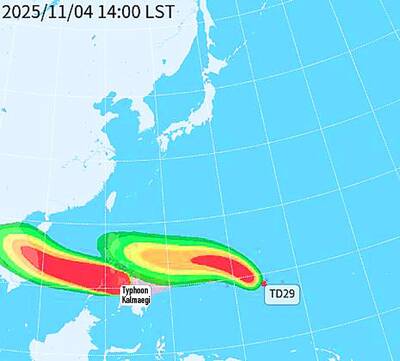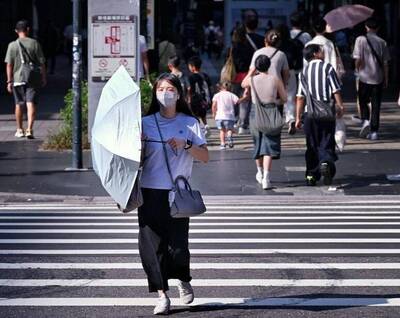A shipment of frozen white shrimp imported from China in June has been found to contain enrofloxacin, an antimicrobial that is not approved for use in fish farming, with much of the shipment believed to have been sold to consumers, a Department of Health official said yesterday.
Cheng Huei-wen (
`not serious'
Cheng said that enrofloxacin is sometimes administered to prevent the reproduction of bacteria in humans. He said the antimicrobial had no serious impact on human health, although it could cause gastrointestinal discomfort, allergies or the formation of crystals in the urinary tract.
The Council of Agriculture prohibits the use of the drug in animal and fish farming in order to prevent the evolution of drug resistant bacteria, he said.
pathogen
In 2005, the US Food and Drug Administration reported that enrofloxacin had been found to promote the development of drug-resistant strains of Campylobacter, a human pathogen.
The Department of Health banned imports of frozen shrimp from China on Aug. 22 after detecting a carcinogenic drug in seven shrimp shipments, Cheng said, adding that shrimp imported from China before that date may still be on the market.
Cheng said his department had authorized the National Animal Industry Foundation to inspect shrimp samples acquired in Pingtung County on Sept. 3 under a program to monitor aquatic product quality.

Three Taiwanese airlines have prohibited passengers from packing Bluetooth earbuds and their charger cases in checked luggage. EVA Air and Uni Air said that Bluetooth earbuds and charger cases are categorized as portable electronic devices, which should be switched off if they are placed in checked luggage based on international aviation safety regulations. They must not be in standby or sleep mode. However, as charging would continue when earbuds are placed in the charger cases, which would contravene international aviation regulations, their cases must be carried as hand luggage, they said. Tigerair Taiwan said that earbud charger cases are equipped

Foreign travelers entering Taiwan on a short layover via Taiwan Taoyuan International Airport are receiving NT$600 gift vouchers from yesterday, the Tourism Administration said, adding that it hopes the incentive would boost tourism consumption at the airport. The program, which allows travelers holding non-Taiwan passports who enter the country during a layover of up to 24 hours to claim a voucher, aims to promote attractions at the airport, the agency said in a statement on Friday. To participate, travelers must sign up on the campaign Web site, the agency said. They can then present their passport and boarding pass for their connecting international

WEATHER Typhoon forming: CWA A tropical depression is expected to form into a typhoon as early as today, the Central Weather Administration (CWA) said yesterday, adding that the storm’s path remains uncertain. Before the weekend, it would move toward the Philippines, the agency said. Some time around Monday next week, it might reach a turning point, either veering north toward waters east of Taiwan or continuing westward across the Philippines, the CWA said. Meanwhile, the eye of Typhoon Kalmaegi was 1,310km south-southeast of Oluanpi (鵝鑾鼻), Taiwan’s southernmost point, as of 2am yesterday, it said. The storm is forecast to move through central

Taiwan sweltered through its hottest October on record, the Central Weather Administration (CWA) said yesterday, the latest in a string of global temperature records. The main island endured its highest average temperature since 1950, CWA forecaster Liu Pei-teng said. Temperatures the world over have soared in recent years as human-induced climate change contributes to ever more erratic weather patterns. Taiwan’s average temperature was 27.381°C as of Thursday, Liu said. Liu said the average could slip 0.1°C by the end of yesterday, but it would still be higher than the previous record of 27.009°C in 2016. "The temperature only started lowering around Oct. 18 or 19